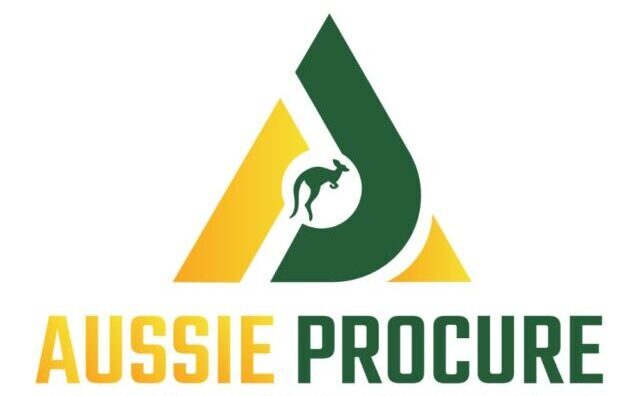Introduction
In an era where climate change and environmental degradation are at the forefront of global concerns, sustainable sourcing has emerged as a key strategy for businesses. Sustainable sourcing, also known as ethical procurement, is the practice of purchasing materials, goods, and services from suppliers who operate using environmental, social, and economic best practices. It’s a mechanism that emphasizes the importance of society, the environment, and profit.

Understanding Sustainable Sourcing
Sustainable sourcing refers to the process of procuring goods and services in a way that considers their environmental, social, and economic impacts. It involves selecting suppliers and products that adhere to ethical standards, reduce carbon footprints, and promote positive social outcomes. This approach goes beyond mere compliance with regulations; it embodies a commitment to creating a more sustainable and equitable world.
Key Principles of Sustainable Sourcing
- Environmental Stewardship: This principle emphasizes minimizing the environmental impact of sourcing activities. It includes reducing greenhouse gas emissions, conserving water, and protecting biodiversity. Businesses can achieve this by choosing suppliers who use renewable energy, practice sustainable agriculture, or manufacture products with a minimal ecological footprint.
- Social Responsibility: Sustainable sourcing also focuses on the well-being of workers and communities. This involves ensuring fair wages, safe working conditions, and respecting human rights. Companies should prioritize suppliers who support local communities, promote diversity and inclusion, and adhere to ethical Labor practices.
- Economic Viability: While environmental and social considerations are crucial, sustainable sourcing also needs to be economically viable. Businesses must find a balance between cost efficiency and sustainability, ensuring that their sourcing strategies do not compromise their competitiveness.
The Need for Sustainable Sourcing
The globalization of supply chains and pressure to lower production costs have negatively impacted environments and communities around the world. Since the 1990s, awareness of these negative impacts has grown, leading stakeholders to push companies to take responsibility and actively work to improve the sustainability of their supply chains and become responsible supply chains.
Companies are now ramping up their climate commitments, and with them, their ambitions to source materials—such as green steel, recycled aluminium, and recycled plastic—that have lower emissions intensity than their conventional equivalents. However, the output of green materials isn’t keeping up with the increase in demand. This imbalance in the market will squeeze makers of industrial goods and consumer products that have pledged to reduce their supply chain emissions.

Benefits of Sustainable Sourcing
- Enhanced Brand Reputation
Consumers today are more informed and concerned about the ethical practices of the brands they support. By adopting sustainable sourcing, businesses can build a positive image and earn the trust of eco-conscious customers. This can lead to increased customer loyalty and a competitive edge in the market.
- Risk Mitigation
Sustainable sourcing helps companies identify and mitigate risks associated with environmental regulations, resource scarcity, and social issues. By proactively addressing these concerns, businesses can avoid supply chain disruptions, legal penalties, and reputational damage.
- Cost Savings
While the initial investment in sustainable practices might be higher, the long-term benefits often outweigh the costs. Energy-efficient production methods, waste reduction, and resource conservation can lead to significant cost savings over time. Moreover, sustainable sourcing can open up new market opportunities and partnerships with like-minded organizations.
- Innovation and Growth
Embracing sustainability encourages innovation. Companies are compelled to develop new products, processes, and technologies that meet the demands of a changing market. This not only drives growth but also positions businesses as leaders in their industries.
Steps to Implement Sustainable Sourcing
- Assess Current Practices
Begin by evaluating your current sourcing practices and identifying areas for improvement. This involves mapping out your supply chain, assessing the environmental and social impact of each supplier, and identifying potential risks and opportunities.
- Set Clear Goals
Define specific, measurable, achievable, relevant, and time-bound (SMART) goals for your sustainable sourcing strategy. These goals should align with your overall business objectives and be communicated clearly to all stakeholders.
- Engage Suppliers
Work closely with your suppliers to promote sustainability throughout the supply chain. This might involve providing training, setting sustainability criteria for supplier selection, and collaborating on initiatives to reduce environmental impact and improve social outcomes.
- Monitor and Report Progress
Establish metrics to track the progress of your sustainable sourcing initiatives. Regularly review and report on your performance, making adjustments as needed to stay on track. Transparency in reporting not only builds trust with stakeholders but also highlights your commitment to sustainability.
- Foster a Culture of Sustainability
Promote a culture of sustainability within your organization. Educate employees about the importance of sustainable sourcing and encourage them to contribute ideas and take ownership of sustainability initiatives.
Overcoming Challenges
Companies that fail to secure adequate supplies of scarce green materials may need to pay steep premiums, or else they will fall short of their target commitments, potentially harming their relationships with customers, investors, and other stakeholders. Anticipating these risks, careful players across value chains are now working to build the capabilities and strategies needed to avoid supply disruptions in the near term and beyond.
Three near-term actions could prove valuable as businesses prepare for the green-materials supply crunch:
- Developing baseline insights on emissions and pricing for inputs.
- Defining a sourcing strategy to lower emissions over time.
- Implementing sourcing plans at speed.
Conclusion
Sustainable sourcing is not just about being environmentally friendly; it’s about creating a sustainable business model that benefits all stakeholders. It’s about understanding that a company is only as sustainable as the start of its supply chain. As more companies switch to low-emissions resources to meet their climate goals, sustainable sourcing will become an increasingly important strategy for businesses worldwide.
In the end, sustainable sourcing is a journey, not a destination. It requires continuous effort, innovation, and commitment. But the rewards – a healthier planet, a stronger economy, and a better future for all – are well worth the effort.
Sustainable sourcing is no longer a niche consideration; it is a business imperative


